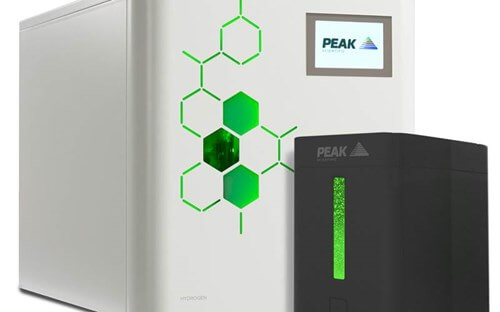Analyzing Alcohol-based Hand Sanitizers using a Hydrogen Gas Generator for GC
Suppliers of alcohol-based hand sanitizers need to guarantee the effectiveness of their products against viruses such as covid-19, using gas chromatography as the main testing method to assess quality. Learn more about using a hydrogen gas generator for GC carrier gas and FID when performing such analysis.

The demand for alcohol-based hand sanitizers saw a surge in the last couple of months, as nations across the globe declared emergency of the covid-19 outbreak, causing stocks to run low and prices to soar.
The unexpected and rapid increase in the sales of alcohol-based hand sanitizers forced sanitizing manufacturers to switch their production to ethanol and isopropyl alcohol products only. The sudden increase in the demand even drove some beverage companies to shift their drinks production to alcohol-based hand sanitizers to help meet supply shortages.
As Dr. Daniela Cavagnino notes in a recent article, an increase in production of alcohol-based hand sanitizers also means an increase in rigorous testing to ensure the final product is effective in killing the virus. For an alcohol-based hand sanitizer to be effective against most viruses such as covid-19, at least 60% of its content must contain alcohol.
Manufacturers of alcohol-based hand sanitizers are required to analyze their products to determine and specify the alcohol content for labelling in accordance with guidelines issued by governing bodies, such as the Food and Drug Administration (FDA) in the U.S.
Gas chromatography plays a key role in this analysis since the main components of alcohol-based hand sanitizers are volatile alcohol compounds such as ethanol, methanol and iso-propanol, which can be chromatographically separated by their boiling points and polar selectivity. With gas chromatography as the main testing method used, the components of the sample can be separated and quantified, as well as tested for any impurities which might affect the quality, ensuring the final product is safe and effective to use.
Using a Hydrogen Gas Generator for Gas Chromatography
Whether your facility is testing the raw materials of alcohol-based hand sanitizers for impurities or analyzing the finished product before it hits the shelves, having a reliable and safe gas supply source with consistent purity is critical.

Precision Hydrogen & Precision Hydrogen SL
PEAK Scientific’s Precision Hydrogen gas generator units offer convenience and reliability in a compact and space-saving design. The Precision series offers different types of hydrogen gas generators for both GC carrier gas and FID, with various flow rates available to meet the requirements of your gas chromatography instrument.
For GC carrier gas and FID, PEAK Scientific offers Precision Hydrogen Trace, which utilizes a proton exchange membrane to supply the highest purity hydrogen (99.9999% Purity). At PEAK, we also offer specialist hydrogen gas generators for FID, which include Precision Hydrogen Standard, as well as PEAK Scientific’s latest innovation, Precision Hydrogen SL, the smallest hydrogen gas generator of its kind.
If you also require flame support for your GC instrument, PEAK’s Precision Zero Air is specifically designed to provide a clean and reliable source of dry, hydro-carbon free air.
Sources:
How GC-FID Can Support the COVID-19 Emergency
Fast analysis of alcohol based hand sanitizers
Coronavirus: Spirits firm turns to hand sanitisers after sales evaporate
Hand sanitizer or hand washing: which is better against coronavirus?